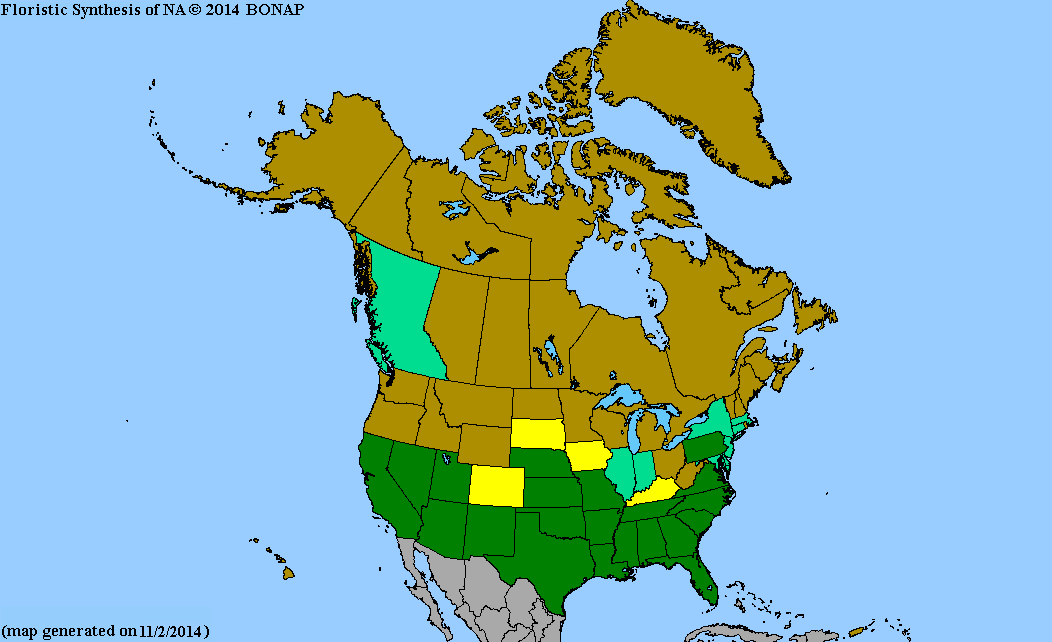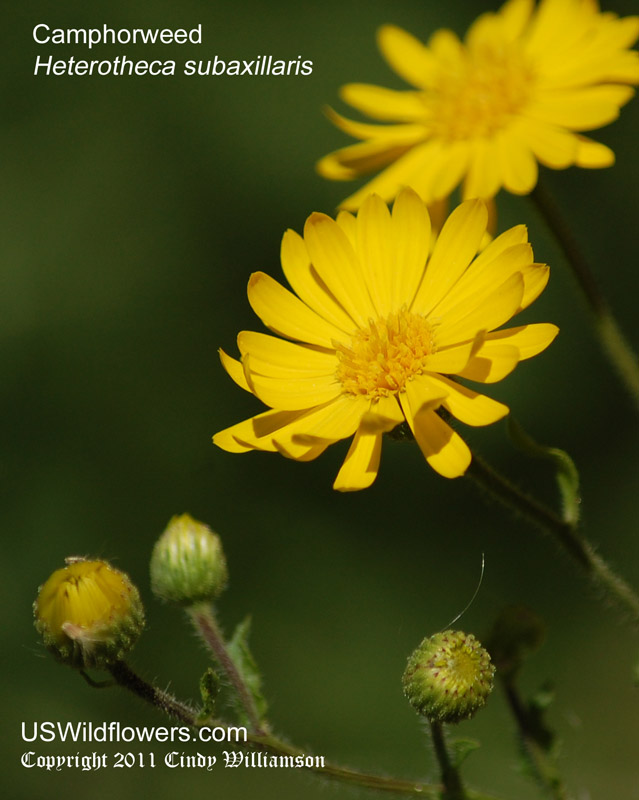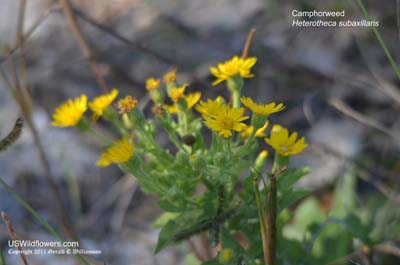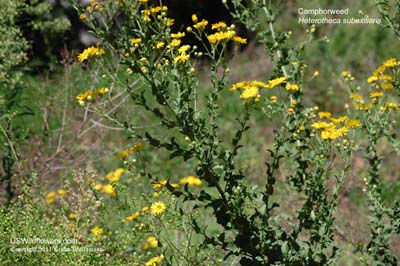Wildflowers of the United States | |||||||||||||
| |||||||||||||
Heterotheca subaxillaris - Camphorweed, Camphor Weed, False Goldenaster. Synonym: Chrysopsis scabra
Some authorities consider Heterotheca subaxillaris to be weedy and/or invasive. Apparently this is with good reason, as the plant is quite variable, even to the point that several authorities have considered it to be several separate species rather than a single species with multiple varieties. The different varieties have a great deal of tolerance to different conditions, allow it to thrive and force out other plants when conditions are difficult. Those that take the position of multiple species (Heterotheca latifolia, Heterotheca psammophila, and Heterotheca subaxillaris) also typically indicate that this H. subaxillaris has a native range limited to the Southeast. There have been studies that have indicated that when planted in similar environments, the morphological differences used to justify species separation are not reliable.
| It looks similar to other Heterotheca and Chrysopsis species, but if you handle the plant, especially broken leaves, you'll be able to identify it by the distinct camphor-like aroma (some would call is a smell rather than an aroma.) Found in: AL, AR, AZ, CA, CO, CT, DE, FL, GA, IA, IL, IN, KS, KY, LA, MD, MO, MS, NC, NE, NJ, NM, NV, NY, OK, PA, SC, TN, TX, UT, VA Leave comments on Heterotheca subaxillaris at this link.   Map courtesy of The Biota of North America Program. Map color key Search Our Database: Enter any portion of the Scientific, Common Name, or both. Do a general Google search of the entire site: #ad
| #ad
| | ||||||||||
|
Commercial / Cookie Notice Looking for Wildflowers for a specific state? Check here: | |||||||||||||
|
All content except USDA Plants Database map Copyright Gerald C. Williamson 2024 | |||||||||||||
Code Update 20230302



